Description and use of baby cocoon, nest
Modern technology is not only making life easier for adults. An invention such as a "cocoon" helps a newly born baby to feel comfortable, and provides parents with peace of mind.

What it is
The cocoon is a special mattress that exactly repeats the anatomical shape of the baby's body. Cocoons vary in appearance and size. Its design is arranged in such a way that the baby seems to be in the womb of the mother, maximum convenience is provided. According to experts, this will help the baby stay calm and in a good mood.

Important! If the question arises whether to use a cocoon or not, take into account the fact that using such a gadget helps the baby to better adapt to the outside world.
Speaking about the history of the creation of a cocoon for newborns, it is worth noting that it was originally intended exclusively for premature babies. A whole team of specialists directly related to medicine was engaged in the development of this device. The first cocoons began to be used in France, and only later "captured" the whole world.

Advantages and disadvantages
The advantages of such a device are enough:
- Babies have a more restful sleep and the process of falling asleep itself is faster;
- The appearance of a flat head syndrome is completely excluded;
- The digestive tract works better, the soreness of colic decreases;
- Hand-eye coordination gets better;
- Models with higher sides guarantee complete safety of the baby;
- The structure can be installed directly on the parents' bed and there is no need to worry that the baby will somehow be harmed. Also, the cocoon is easily installed in the stroller;
- The cocoon can also be used as a changing table with a soft surface;
- There are models that are used up to the age of eight months;
- According to statistics, premature babies in such "devices" quickly "catch up" with their peers.
There are also disadvantages:
- You have to pay a lot of money for a relatively short operation;
- It is not very advisable to use the device in hot summer, the baby may be hot, and it is extremely inconvenient to wash it. Although experts say that for premature babies this will only be a "plus", but for those who were born on time, it can really harm;
- The use of a cocoon does not replace tactile sensations, so you also need to take the baby in your arms, do gymnastics with him
Important! Since in the first months of life they can sleep up to 20 hours a day, it is important that the sleeping place is as comfortable as possible. Study carefully what the device is made of. In modern models, high quality materials are usually used to help maintain the health and comfort of the baby.
According to orthopedists, the cocoon is one of the most wonderful devices for babies in the first months of life.And when buying a "gadget", special attention should be paid to the filler. Coconut coir is the right choice. This material allows the cocoon to take the shape of the baby's body and keep it, and the baby to be in a comfortable position for him. The mattress is firm and anatomically correct.

For what age
The cocoon is usually used for a baby between 0 and 4 months of age. Therefore, it is not surprising that future parents look after such a device for their baby in advance and buy it even before giving birth. If a baby is born prematurely, then they begin to use the cocoon in the hospital.

In some cases, the cocoon is placed directly in the crib so that the baby is not afraid of the large scale of the world around him. Thus, the baby gradually gets to know the space and masters it as much as possible.

Varieties
Cocoon is a general definition of adaptation that has a number of variations.
- Pillow. It is convenient to use it from the very first days of life when feeding, playing or sleeping.
- Nest for newborns. Very similar to the cradle used to protect the baby. The bottom of such a device must necessarily be strong and anatomically correct.
- Mattress. This is one of the simplest types of cocoons. Can be put in a crib or stroller. A kid on such a device is convenient and comfortable.
- Diaper. This model is made according to individual patterns. Velcro is most often used as fasteners, but there are models with zippers.
Each variety has its own advantages and is suitable for specific purposes. If we compare the nest and the cocoon with each other, then the following points can be highlighted: the cocoon will allow you not to leave the baby alone, with its help you will simply carry the baby from place to place. The nest is ideal for leaving your baby to sleep next to you without fear of harm. This is especially true when mommy feeds the baby at night. Then you do not have to get up again, or wait for the baby to be full.

Therefore, advice to parents: before acquiring such an expensive pleasure, answer the question: for what purpose do you acquire a cocoon for newborns? Which view is best for your situation?

And during the purchase, carefully read the information about the materials from which the device is made (it is better if they are natural), and, if possible, study the reviews about the manufacturer. Remember, you trust this device with the life and health of your baby.

How to sew a cocoon with your own hands
It is not at all necessary to spend a lot of money on the purchase of a cocoon. If you have sewing skills, you are guaranteed to be able to make the nest yourself.

You will need:
- Two pieces of cotton fabric measuring 70x90 cm. The fabric must be thick enough to support the filling. It is recommended to wash the canvases before starting work.
- Filler for the main mattress 35x65 cm.
- Filler for the sides of the cocoon.
- A set of sewing accessories: needles, threads, scissors, accessories and lace for finishing, tailor's chalk (or remnant), drawing paper for patterns and a sewing machine.
The pattern consists of two parts: the main mattress and the sides, which resemble a horseshoe shape on the pattern. However, we will sew both parts together, without separating one from the other. Cut the pattern out of paper, then, attaching it to the fabric, add seams (1 - 1.5 cm) and also cut it out.

First we sew the outer seams along the edge of the sides and turn out the nest, then we cut out the filling for the mattress, insert it into the cotton base and sew it again along the contour. Then we make a few lines across the mattress. It turns out some semblance of a quilted product. Just don't place the stitches too close together. At the final stage, we fill the sides with filler.

Chintz, flannel, fleece, bike or calico are used as the main fabric for the cocoon. And for filling the sides, both synthetic and natural materials are used, but the latter are given greater preference. Cotton wool, feather down or bamboo fiber are good options.
Video: Do-it-yourself cocoon nest for newborns
How to use
With the seeming simplicity of the device, there are a number of points that must be taken into account before putting the baby in a cocoon (or nest).

First, adjust the size of the device exactly to the size of the baby. To do this, you need to remove the pillowcase and lay the baby's head towards the tapering area. In this case, the stopper must be located exactly along the line of the newborn's buttocks so that it cannot slip. And the legs should be raised up so that the child cannot push off from the sides. After all the manipulations are done, put on a pillowcase and use a cocoon.

The cocoon is a convenient device. Of course, someone will argue that you can do without it. But if there is an opportunity to make the first months of a baby's life more comfortable and safe, why not take advantage of it?





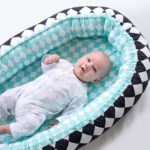



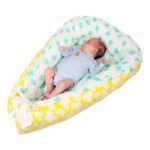



























































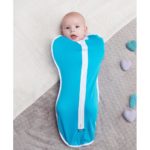

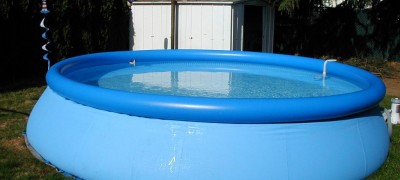



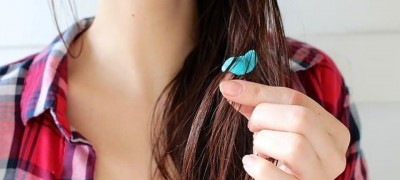

Discussions
To be honest, I only see benefits in a cocoon mattress. We bought for 6,000 rubles, so in ours also vibration massage was in the functions. Waterproof cover, regular cover, belt, stadiometer, roller. All this in our model Dolce Cocoon was included in the package